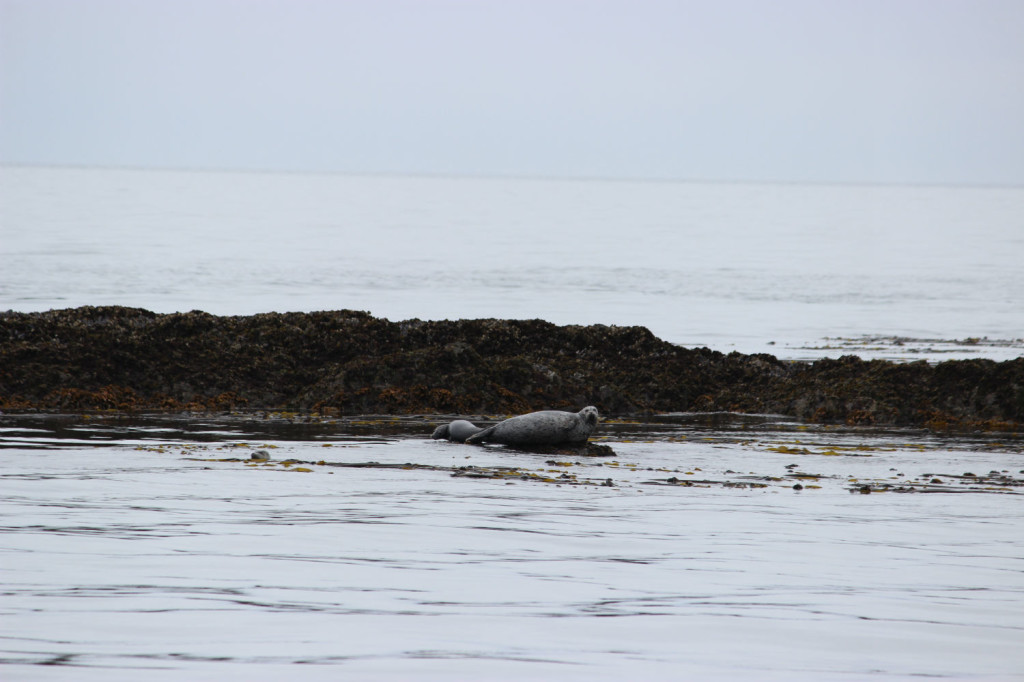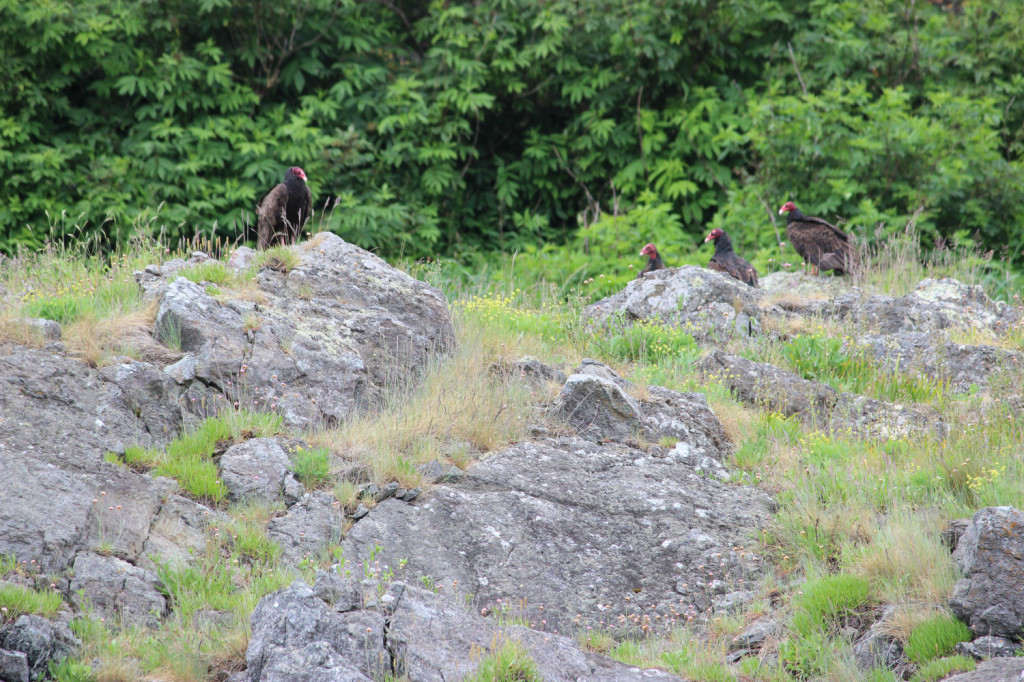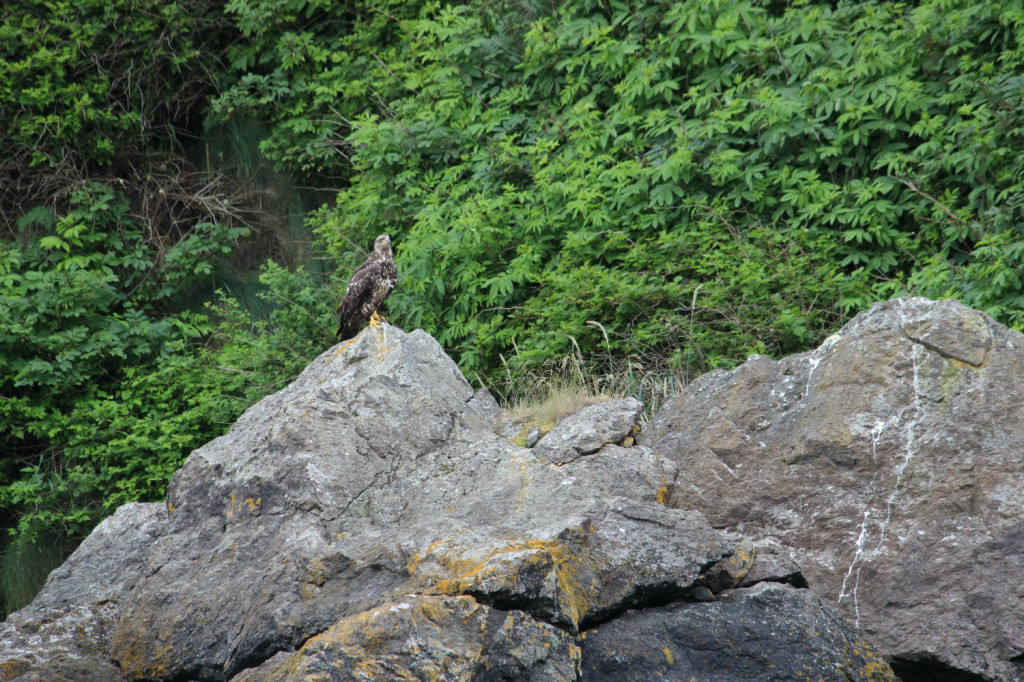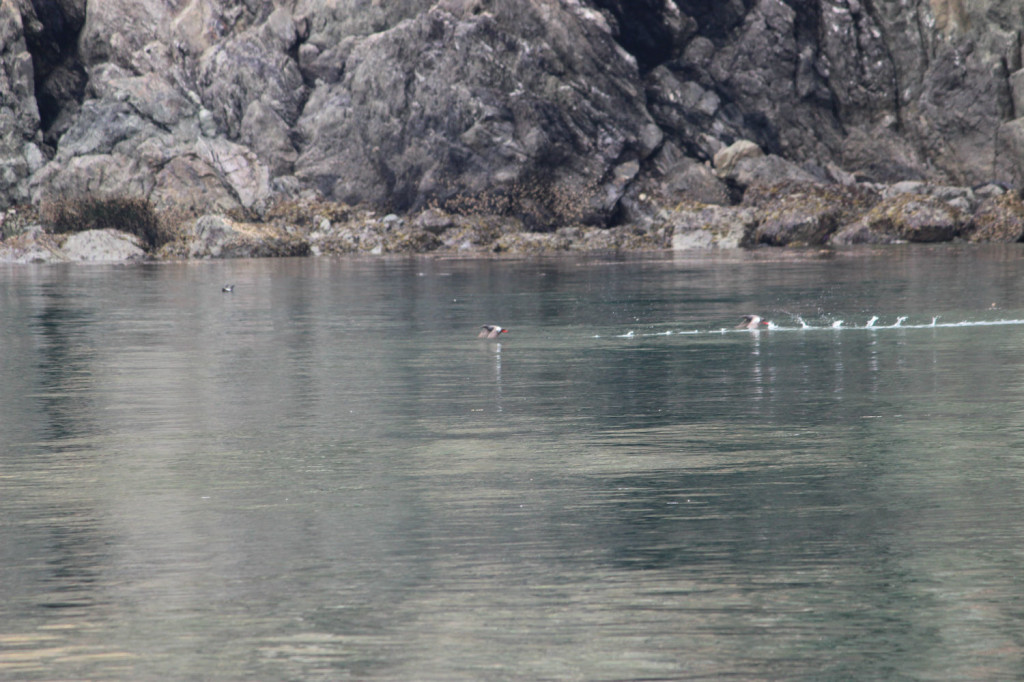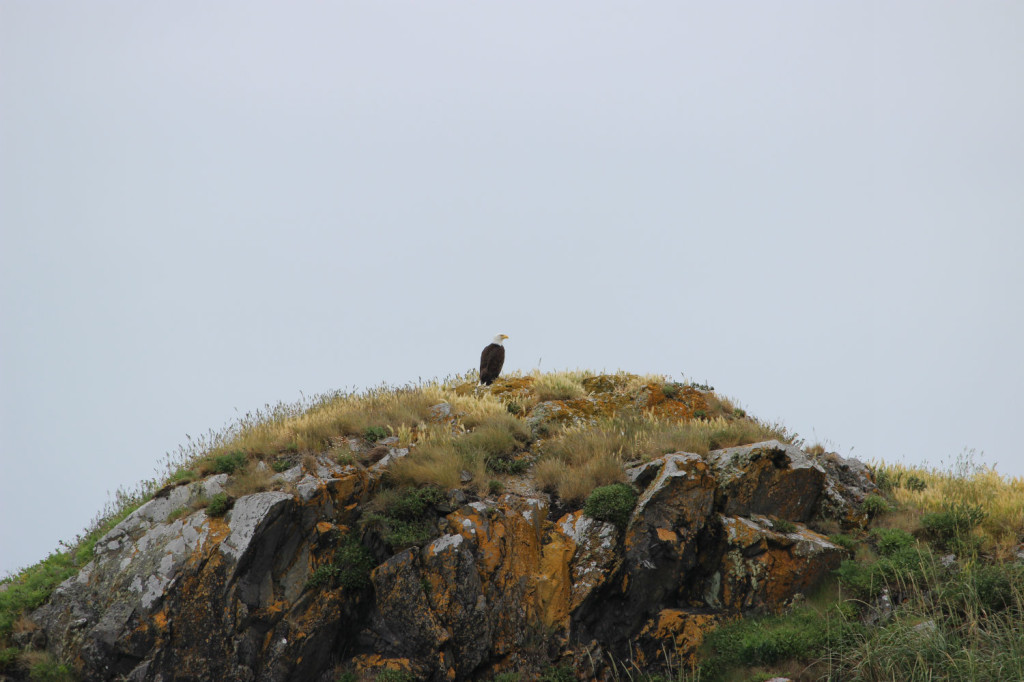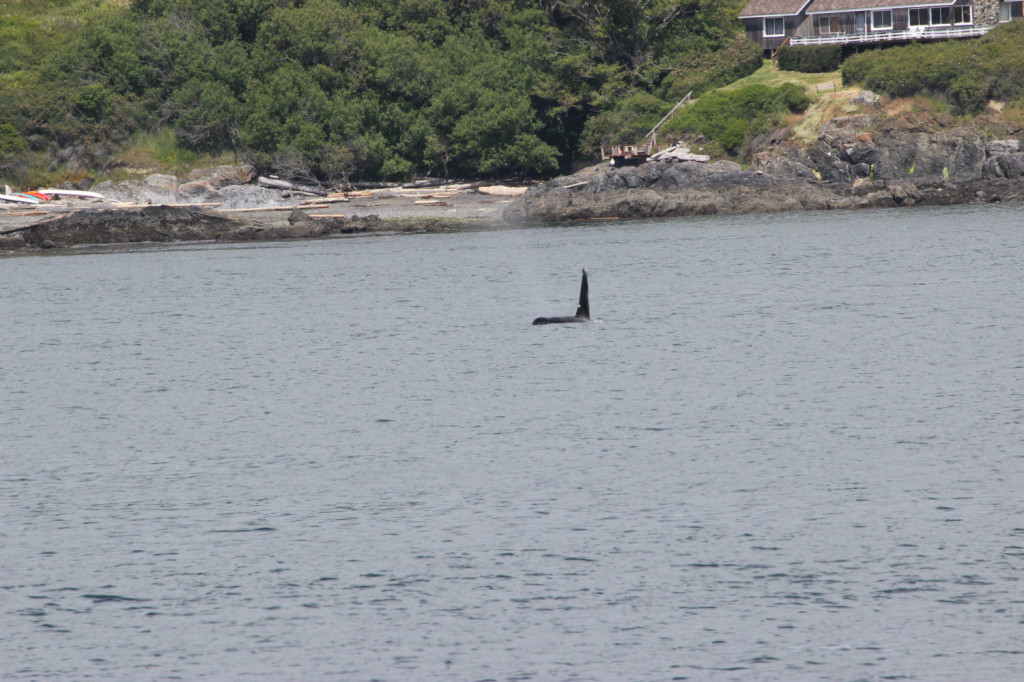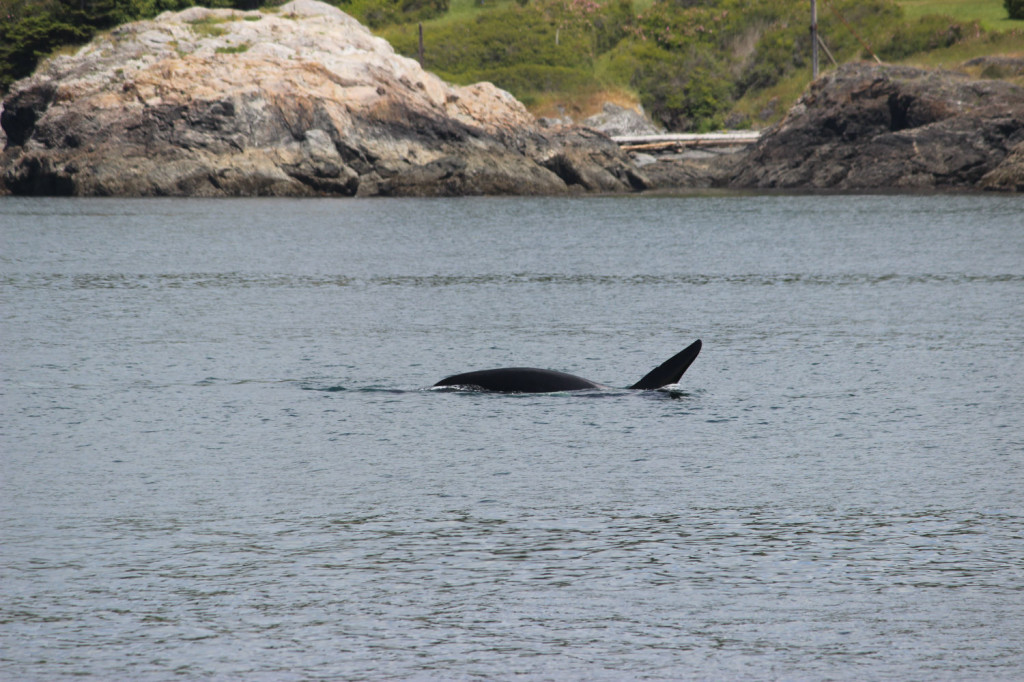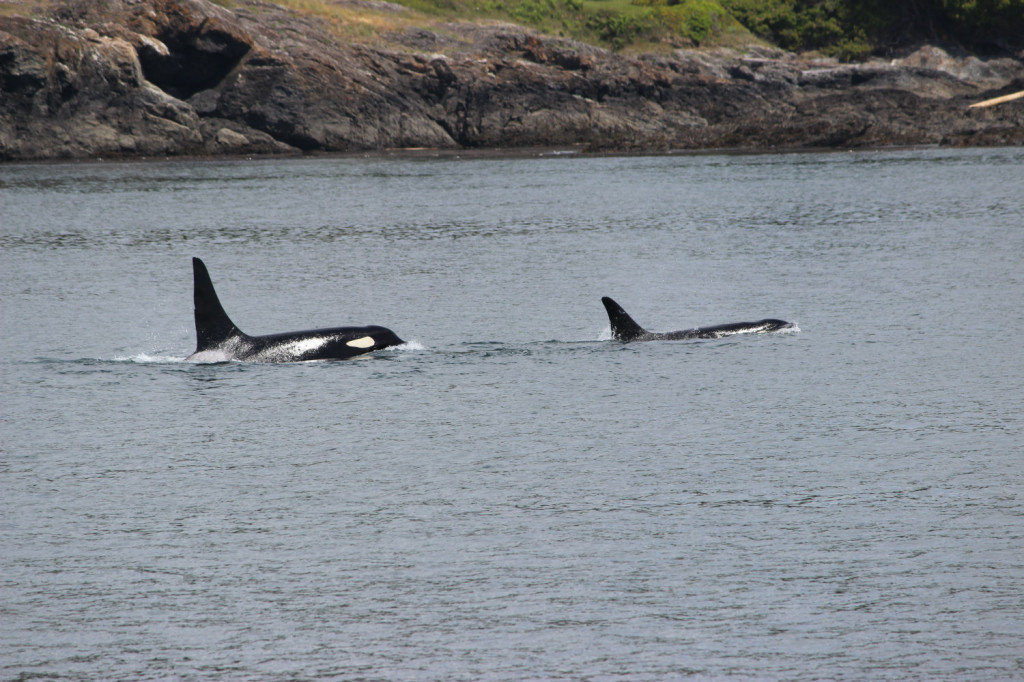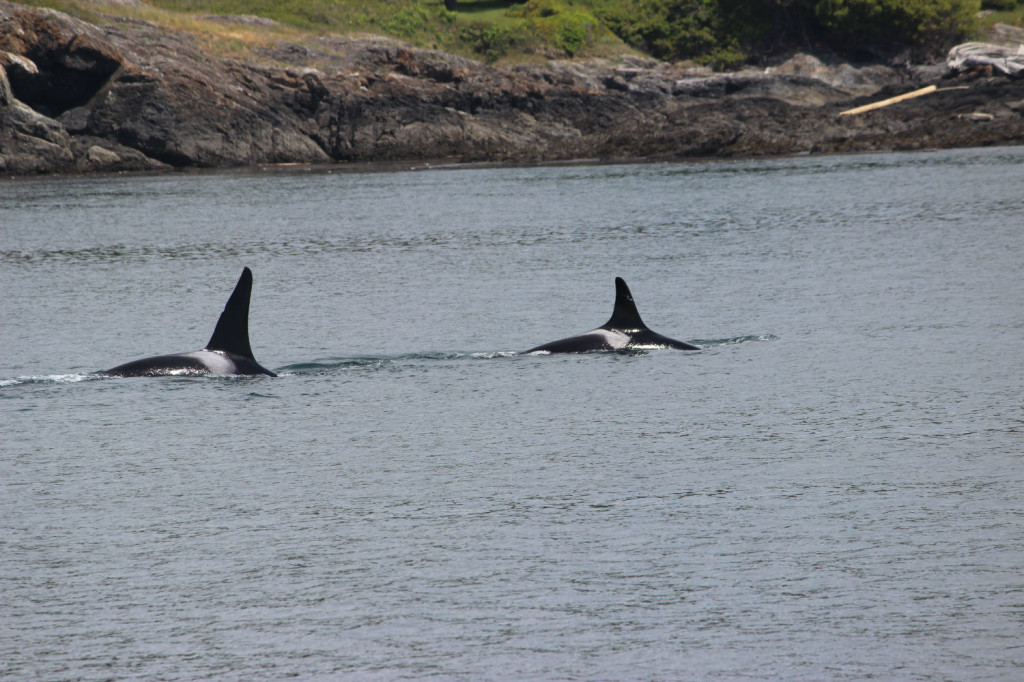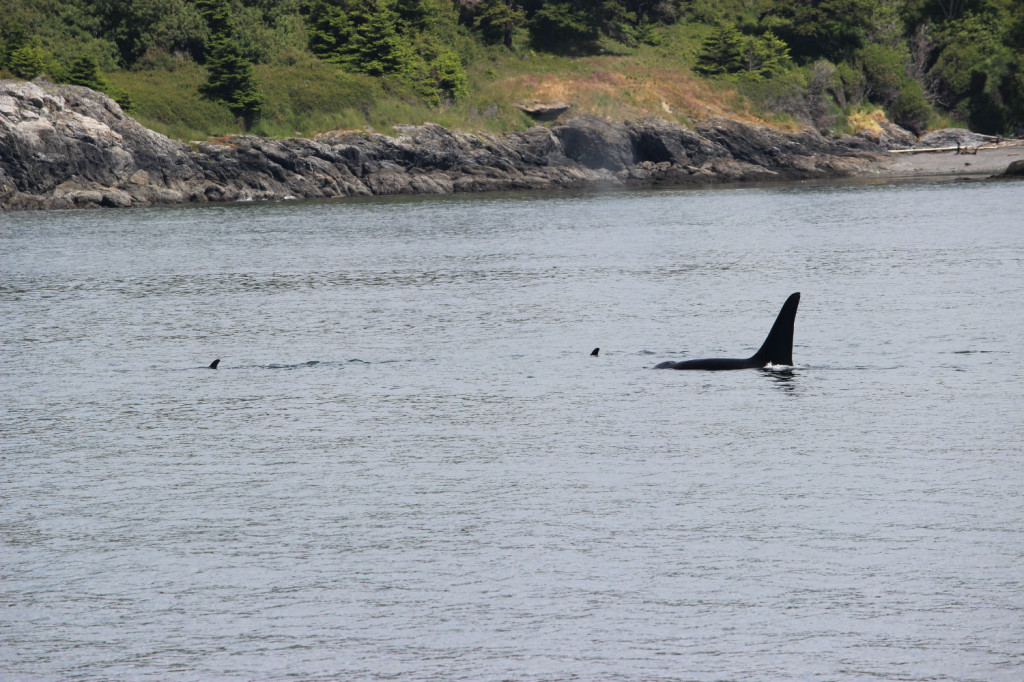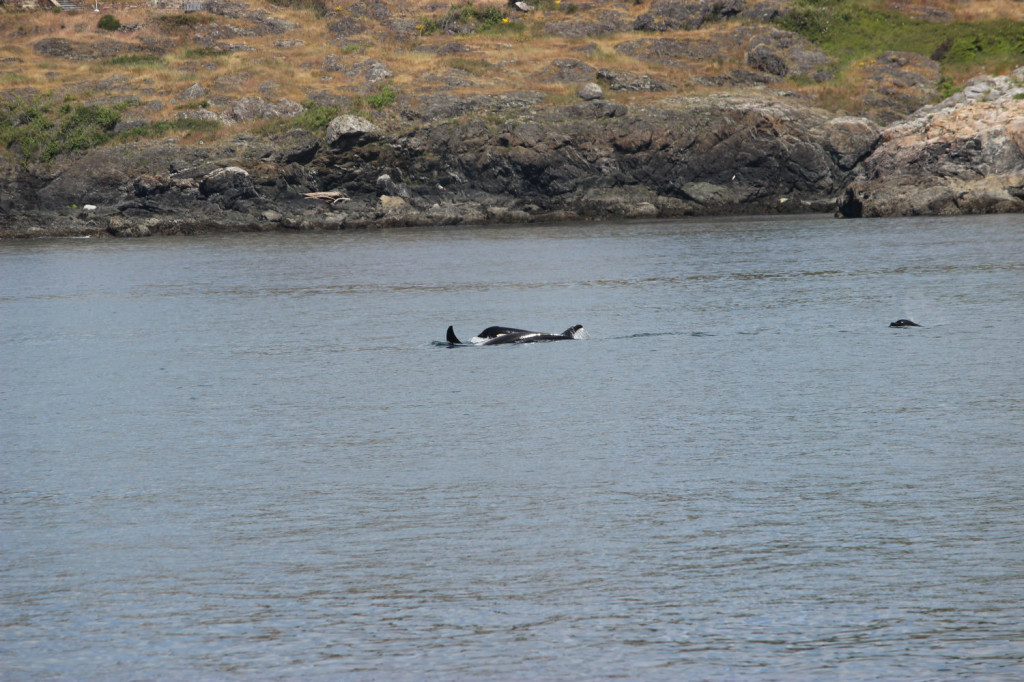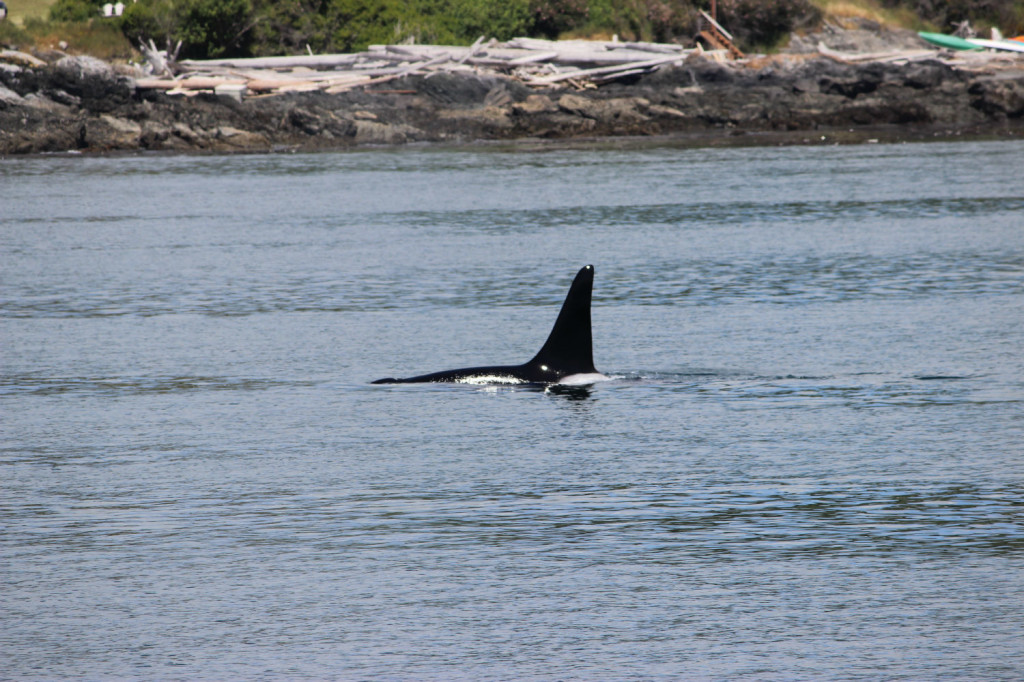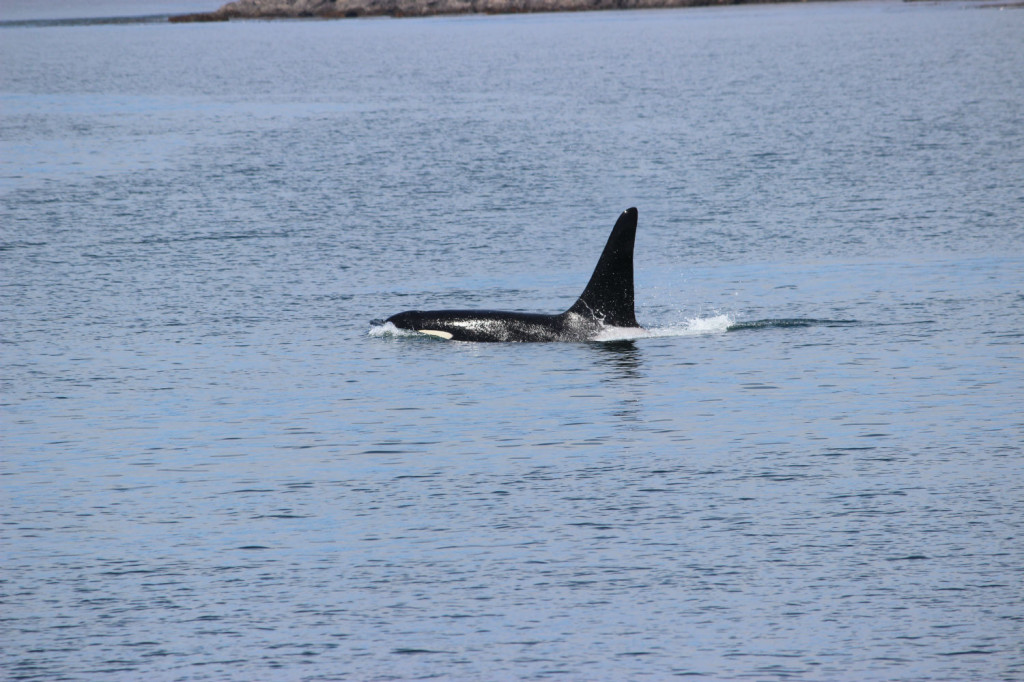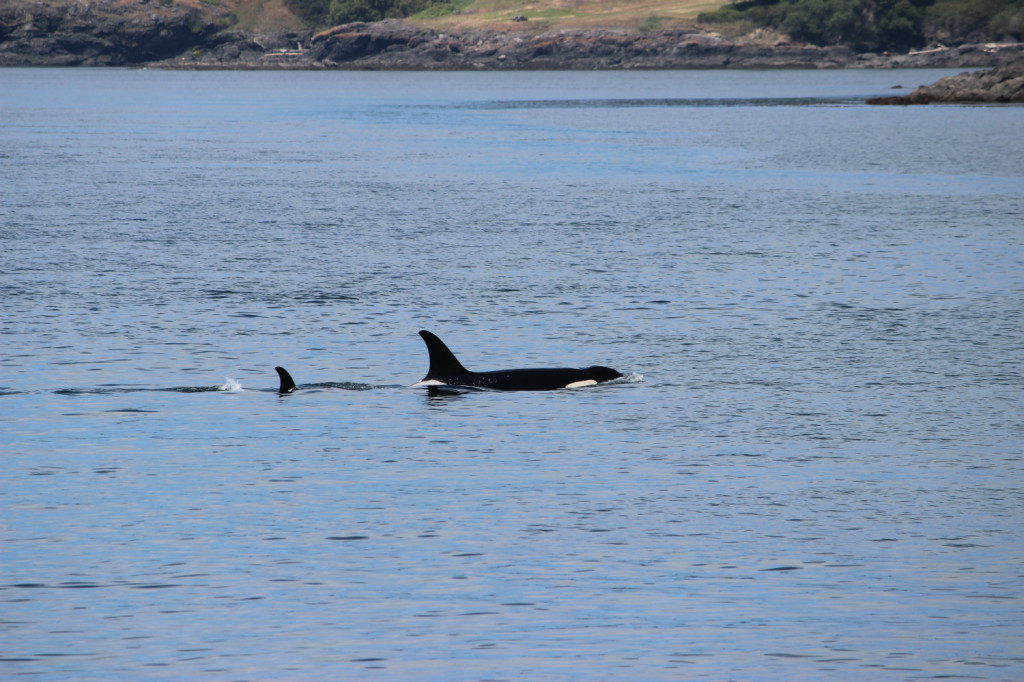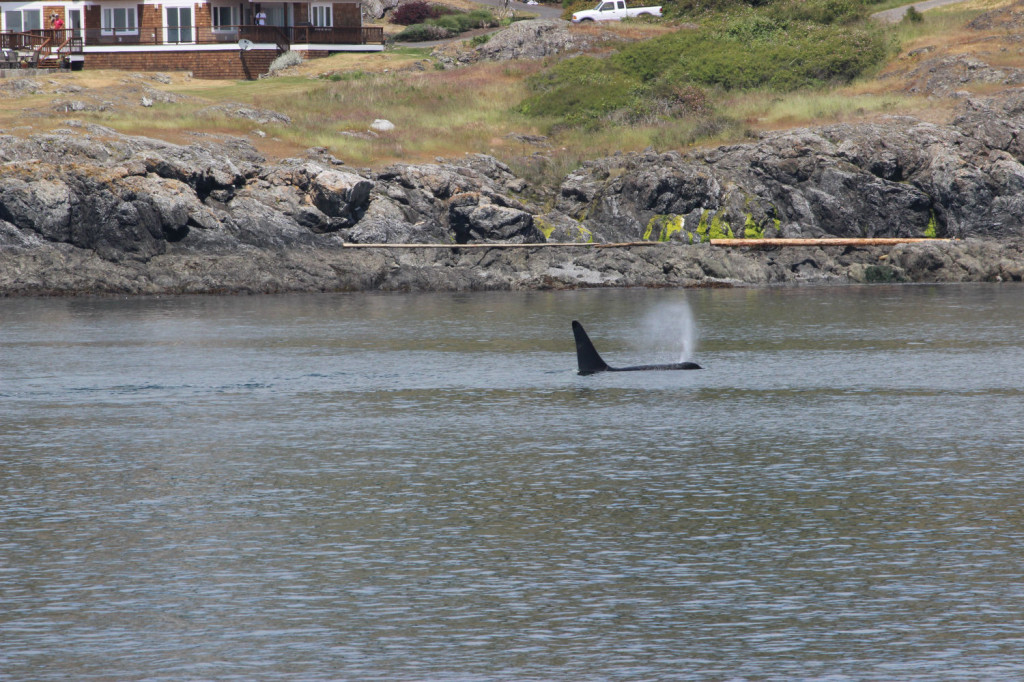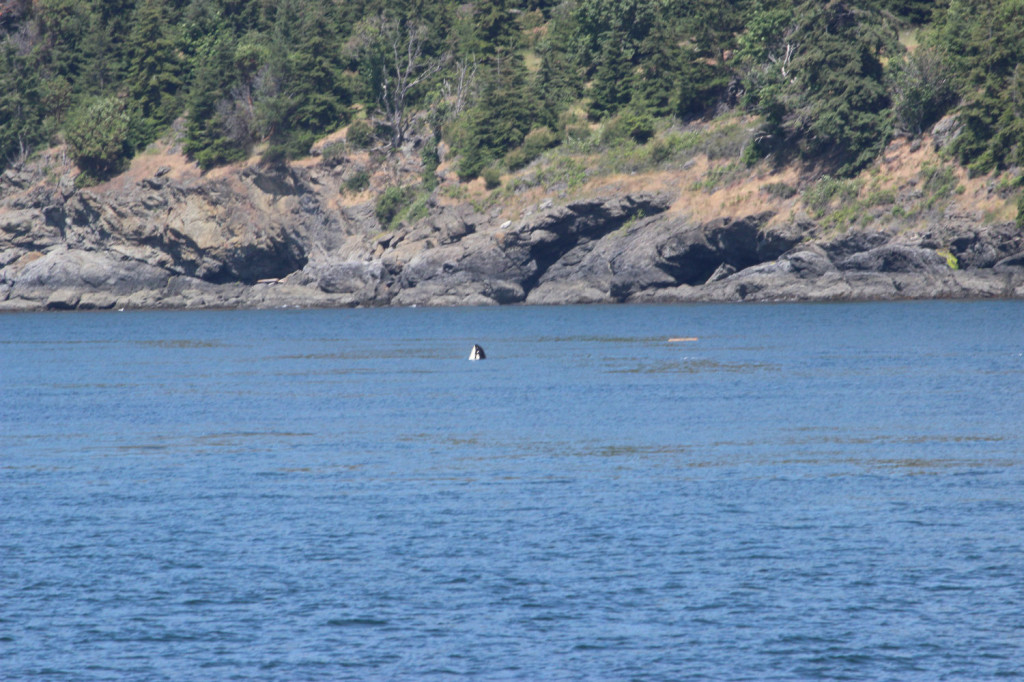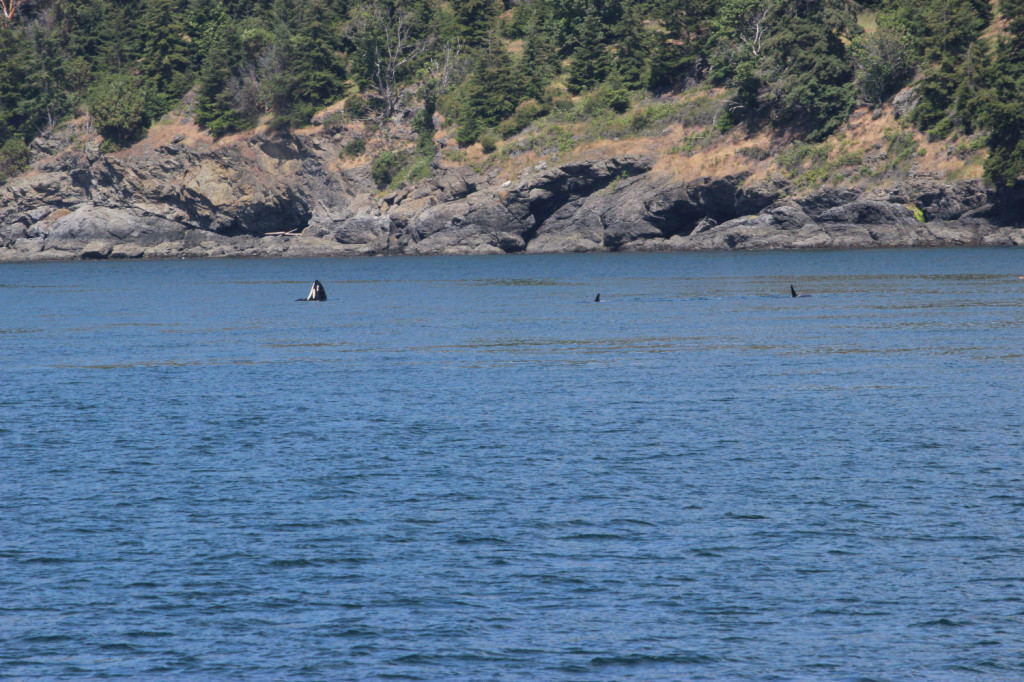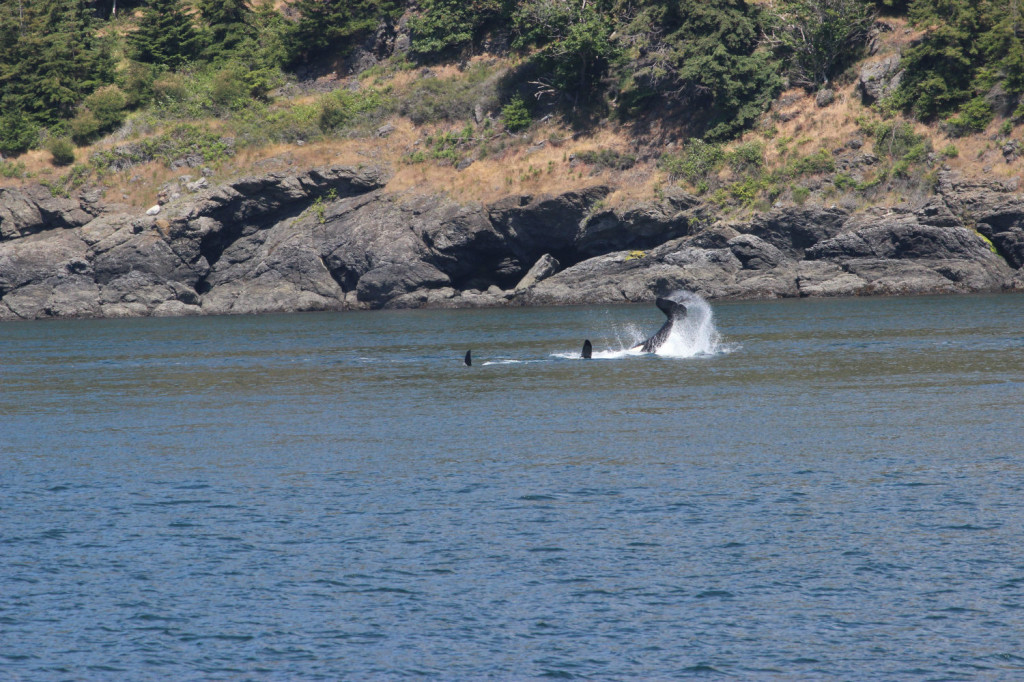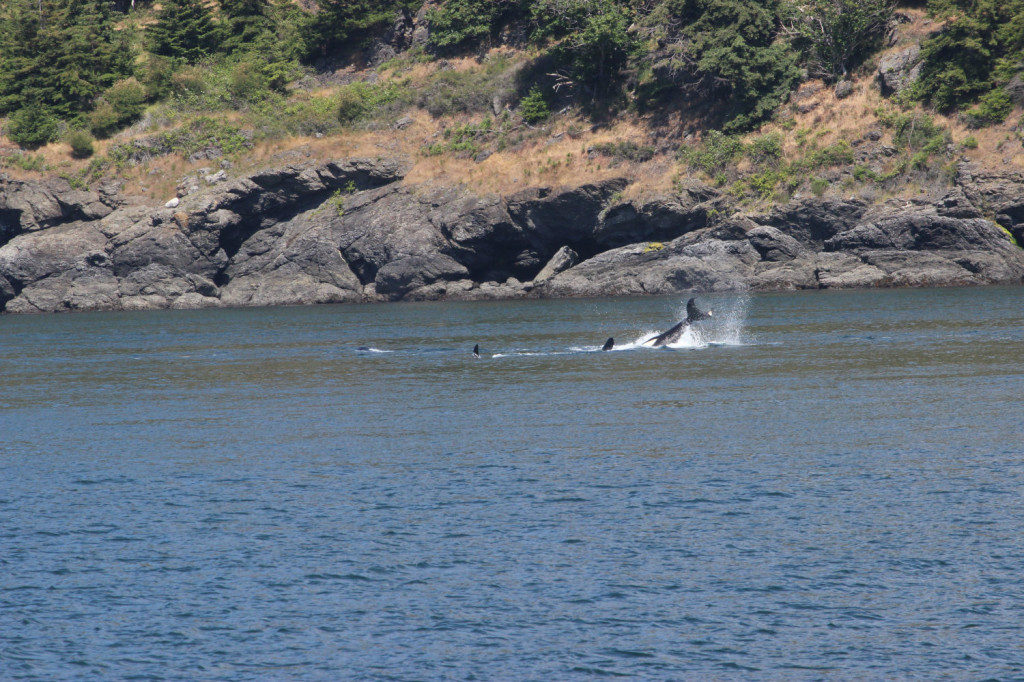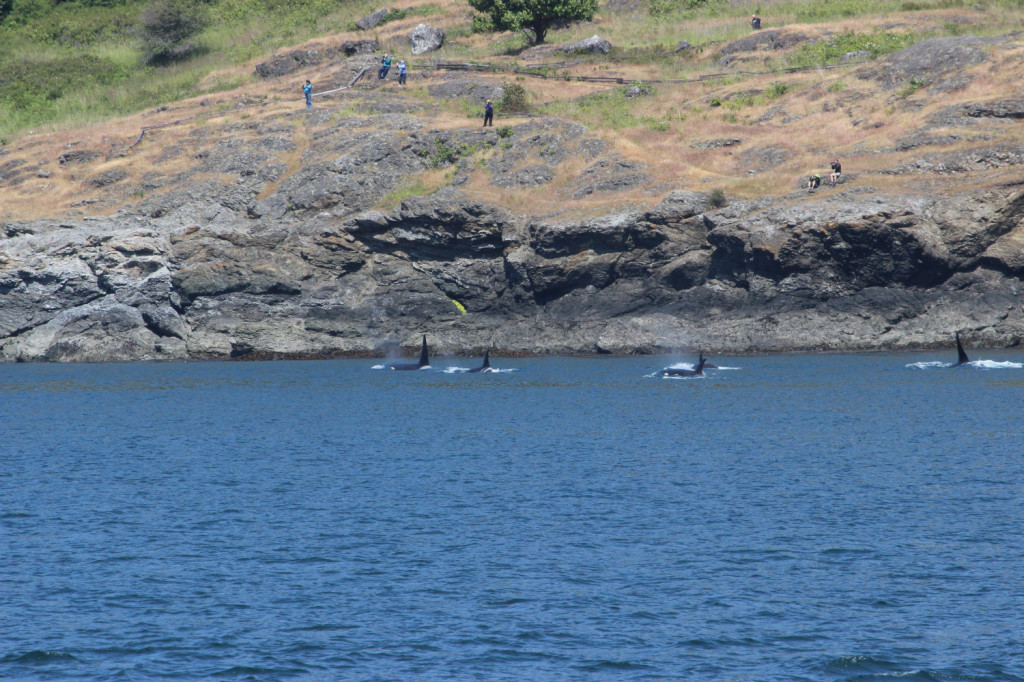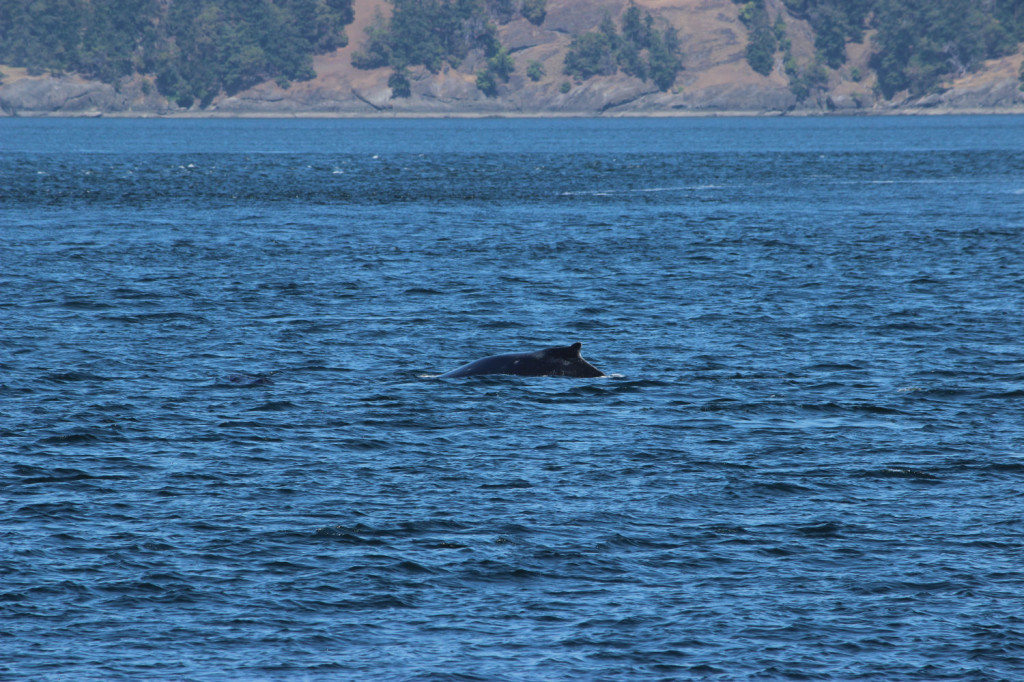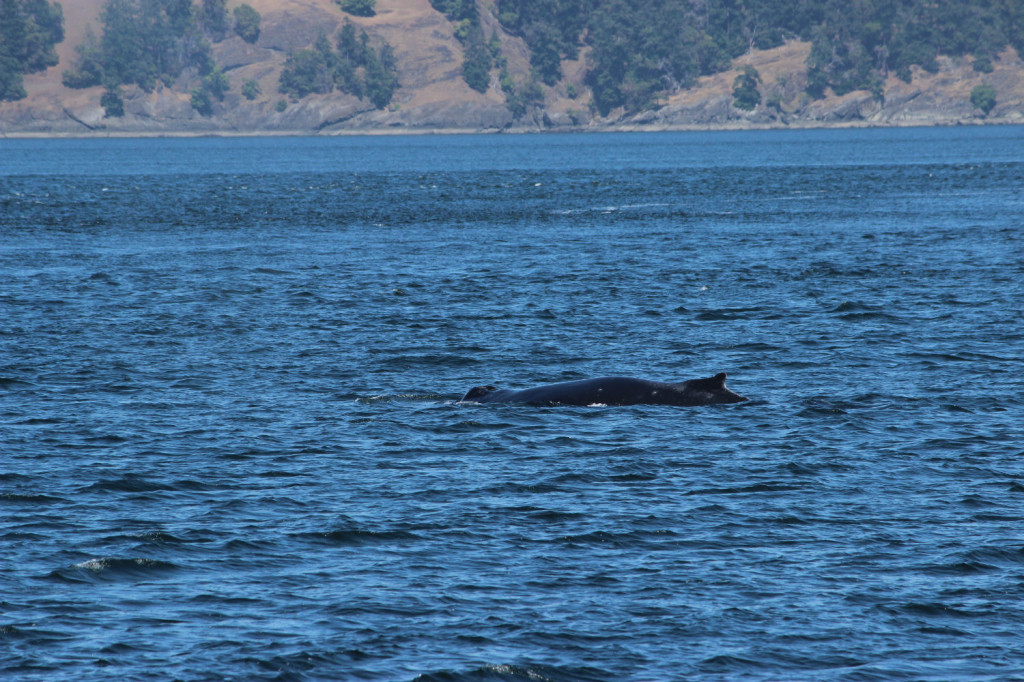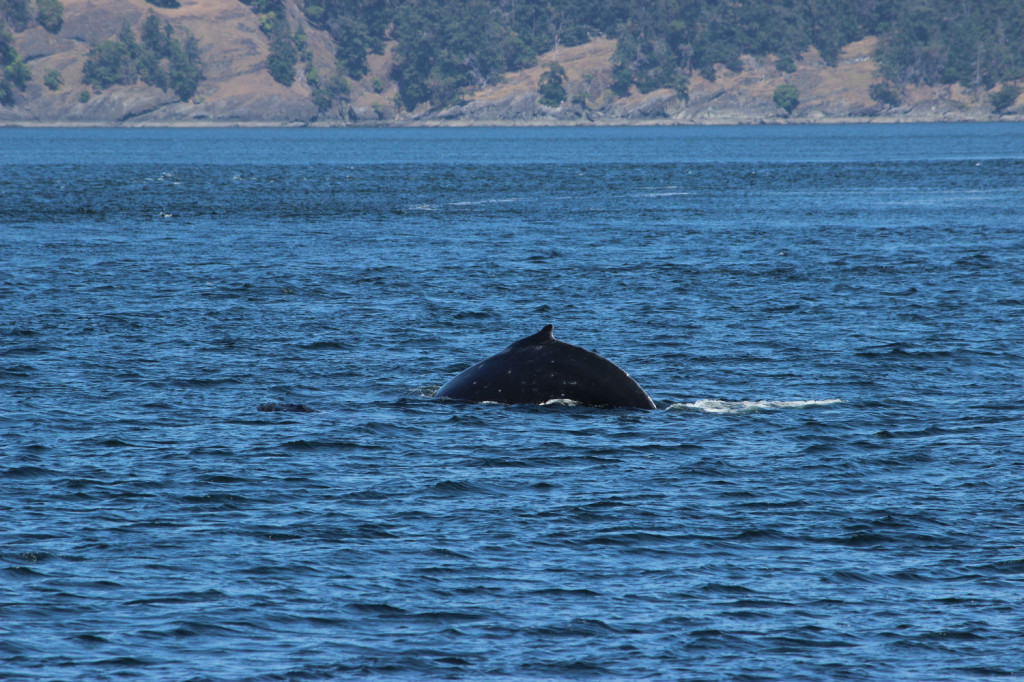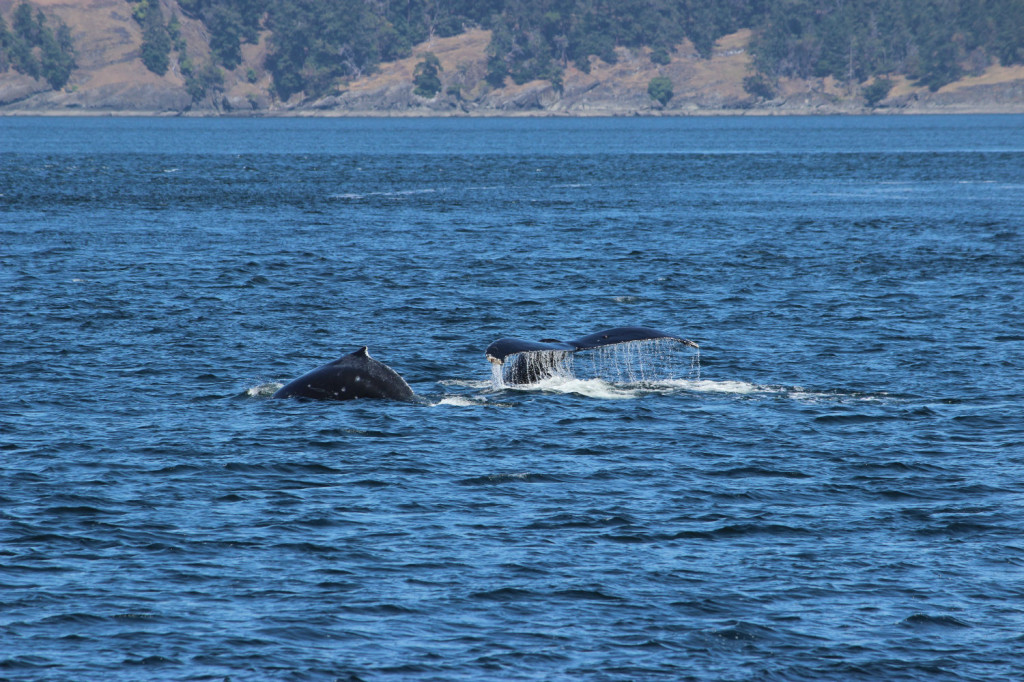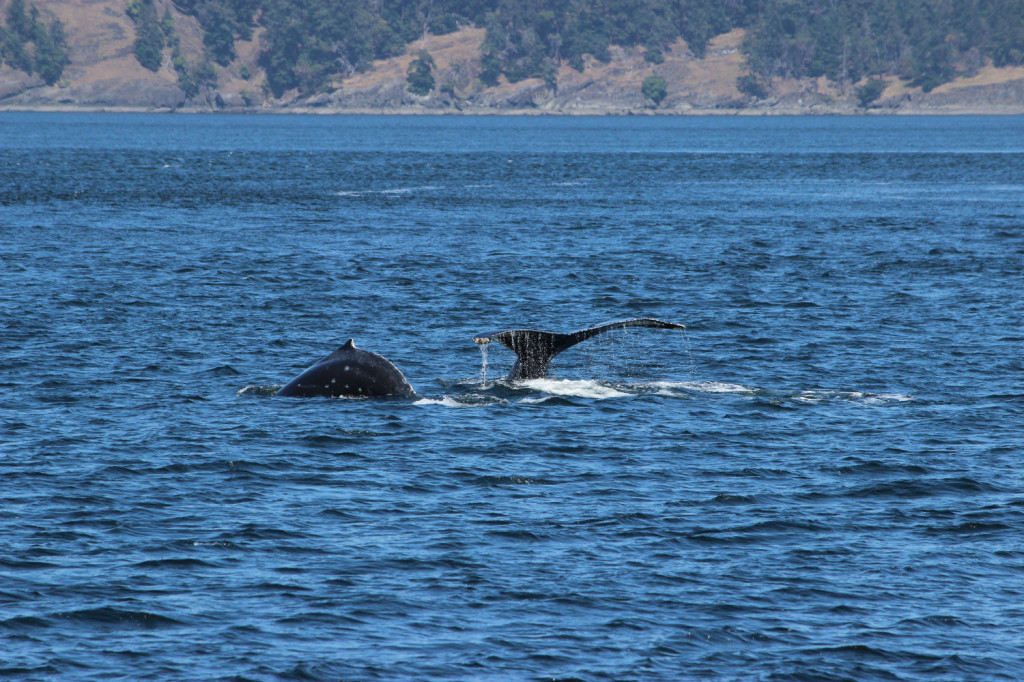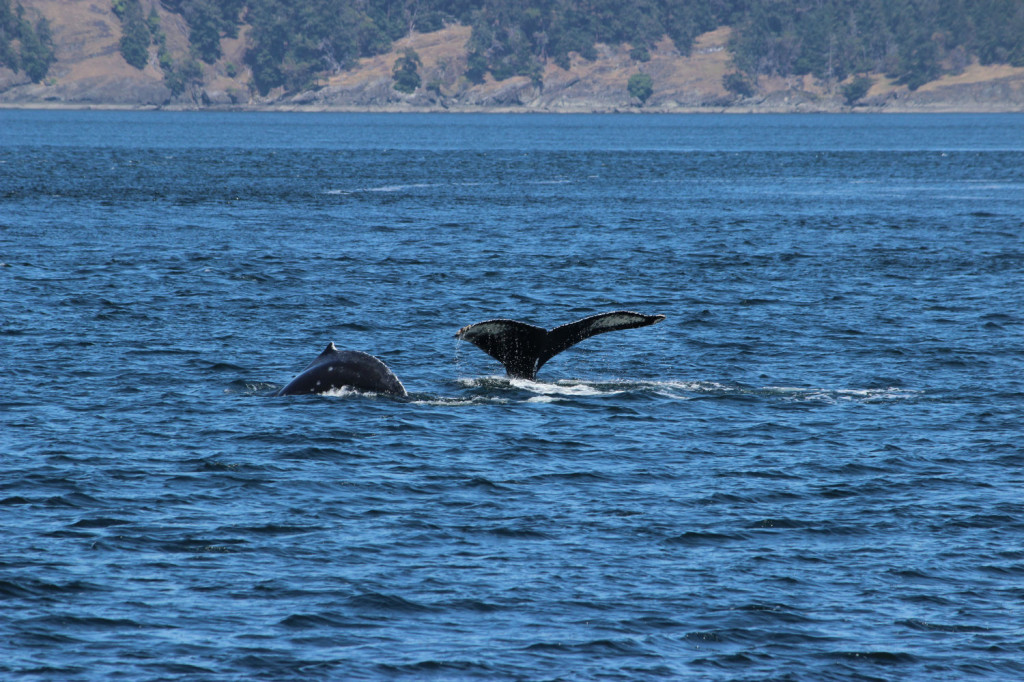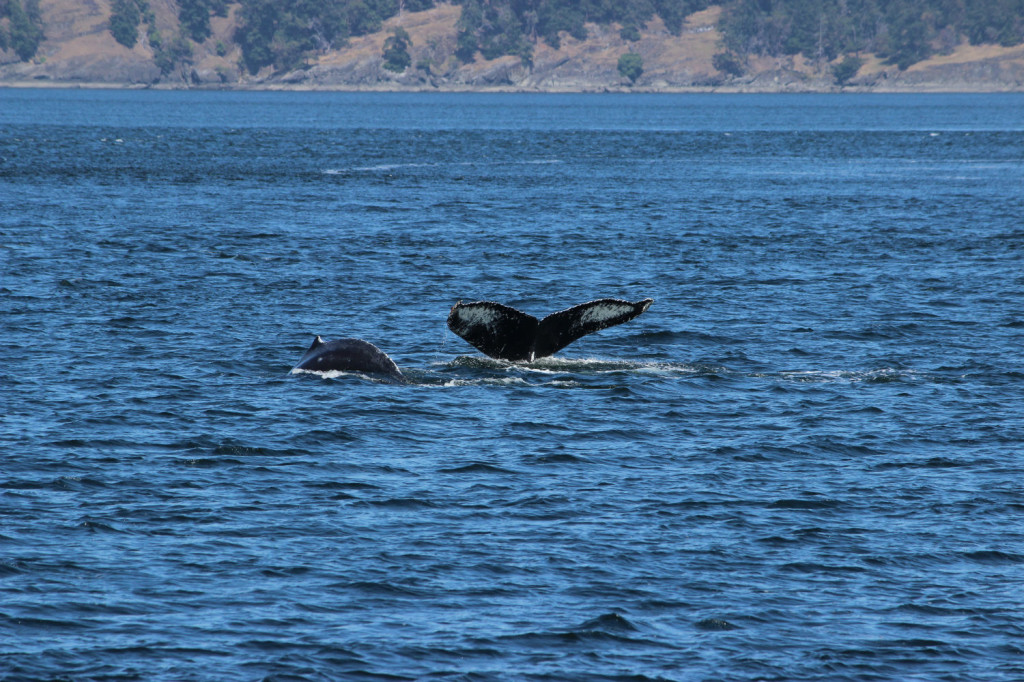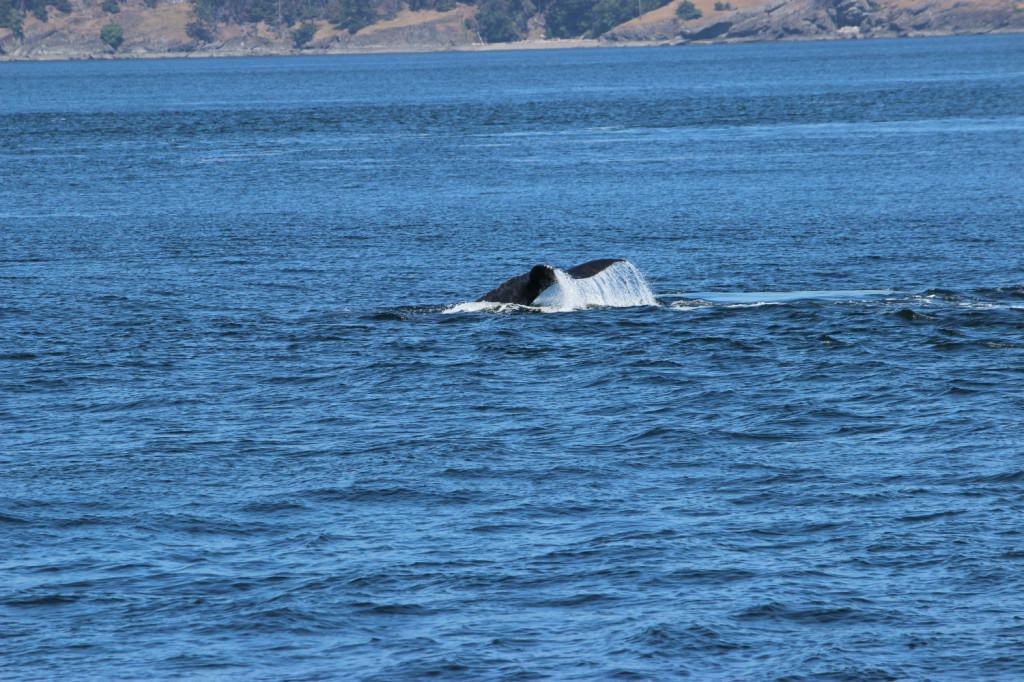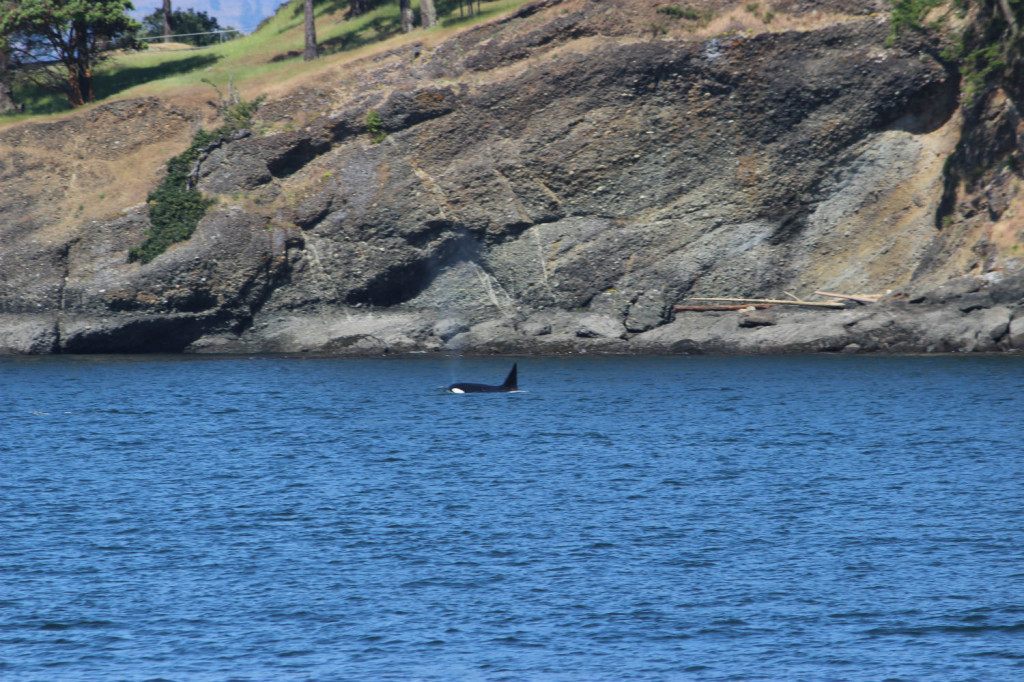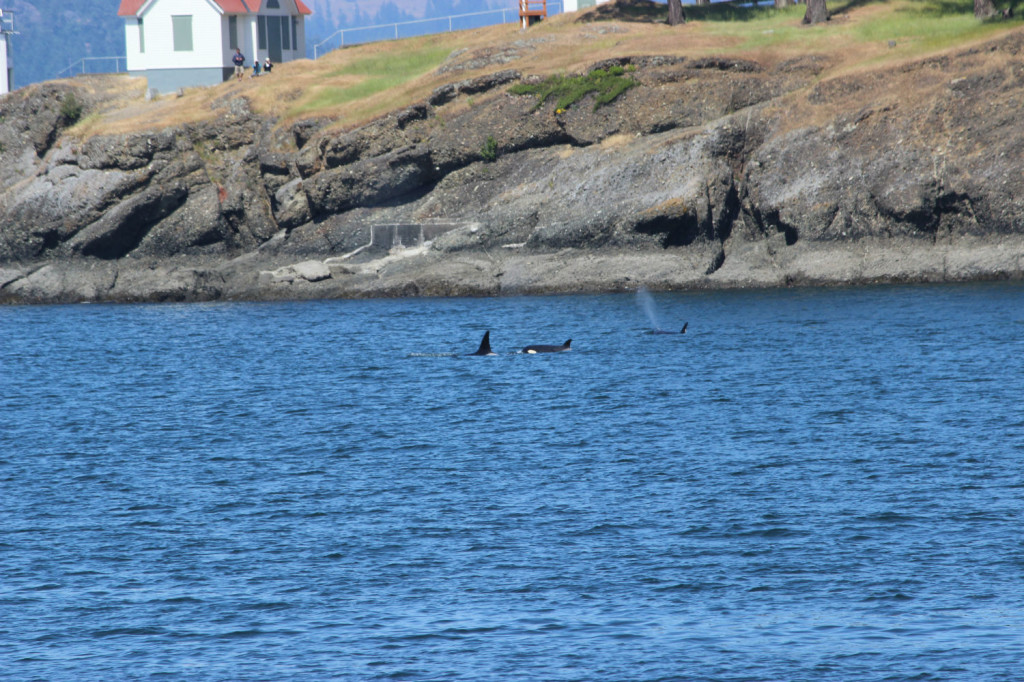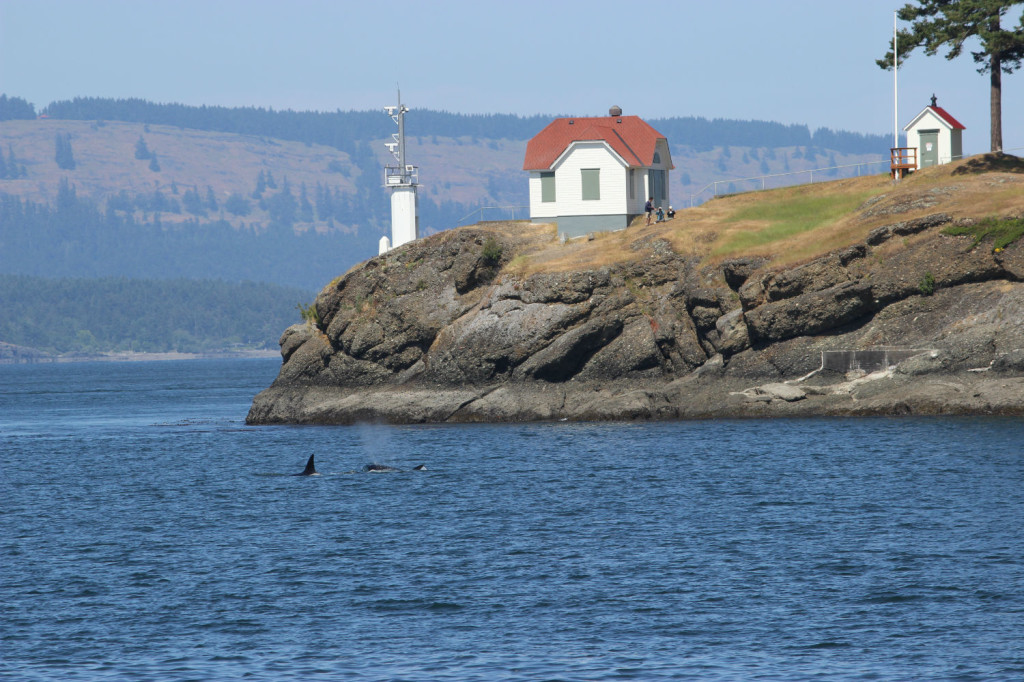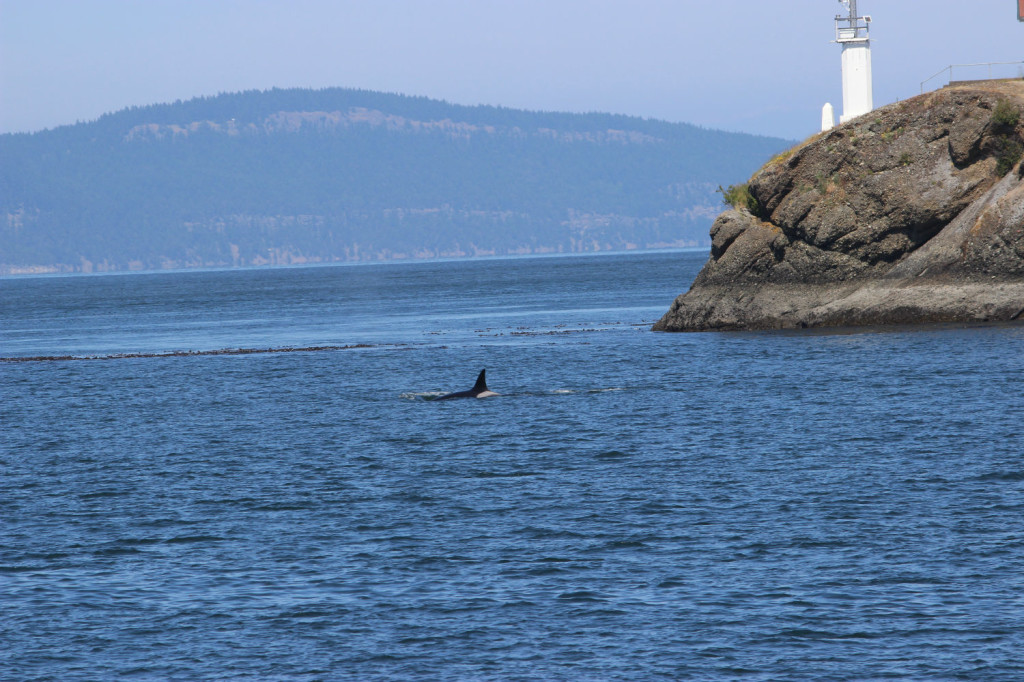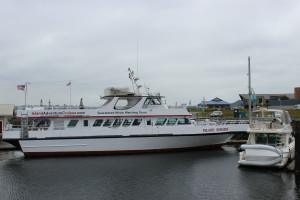 Once in a while you have an experience on a trip that will be with you forever. We’ve had several of those through years, like the airboat ride we took in the Everglades a couple of years after we moved to Florida. Our whale watching tour is now another one of those experiences.
Once in a while you have an experience on a trip that will be with you forever. We’ve had several of those through years, like the airboat ride we took in the Everglades a couple of years after we moved to Florida. Our whale watching tour is now another one of those experiences.
After my mixup in planning a whale watching tour out of Seattle, and making the adjustments in plans, we left Seattle Tuesday morning we left and headed north for our whale watching tour. Although yesterday had been a beautiful, sunny day in Seattle, it had rained overnight and was overcast. It looked exactly as you might imagine a Washington day.
The tour that I booked was with Island Adventures based in Anacortes on Fidalgo Island, just east of the San Juan Islands and that turned out to be a great choice. This cruise was awesome. They have a naturalist on board that was not the captain so instead of trying to explain wildlife while piloting the boat, he was free to mingle with passengers, answer questions, and talk about animals. They provided complimentary wildlife viewing guides for each passenger that explained information about the animals and area plus maps of the islands. Since we sailed out of Anacortes, we headed directly into the San Juan Islands instead of sailing north for a long time like we would have had we gone with the Seattle crew, so there was more time for wildlife viewing. Judging from the crew’s excitement, apparently we happened on an extraordinary animal day. We saw many more types of animals than normal and a larger quantity of orcas than usual. Awesome!
We sailed south out of Anacortes and around the southern tip of Lopez Island where we saw two adult and two pup harbor seals on the rocks. Harbor seals spend most of their time in the water but sun themselves on rocky outcroppings. They eat 5-10% of their body weight each day of fish, crustaceans, squid, and octopus.
We also saw turkey vultures eating something, a two-year-old bald eagle on a rock, cormorants, ducks, Canada goose, ducks, murrelet, and a sea star. The sea star was clinging to some rocks at the waterline and was bright purple.
We headed west around the bottom of Lopez and along the west coast of San Juan Island. As it turned north we encountered the “J” pod of southern resident orcas. Resident orcas are fish eating whales and their main diet is salmon with other types of fish as they find them. We spent some great time watching the whales in the pod and they were on the surface doing breaches, tail slaps, and spyhops. It was fun to watch them play in the water. The captain was very respectful of the whales and kept a reasonable distance, turning the boat when he could without disturbing the whales. Occasionally the whale approached a little closer and he let us know that he would be unable to turn the motor on while the whales were so close. We just had to move around the boat to get the best view as it slowly spun around.
The “L” pod of residents came south to meet up with the other pod and interact, to create a superpod of about eight whales! This was totally awesome and they were socializing together then started running north so we sailed beside them and ran up the coast with them. It was an amazing site. The whales eventually went into the waters near the Lime Kiln Lighthouse and we couldn’t get closer to 1/2 mile from that, so they were pretty far away.
While I was watching the orcas, I happened to be standing up by the bridge and heard Capt. Shane talking with other whale watchers about a humpback whale sighting. At this point, he decided to peel off from the orca watching and see if we could find the “Hotel Bravo” (apparently that’s nautical lingo from humpback whale!). The captain turned the boat out into the strait west of Stuart Island. We actually crossed into Canada searching for the humpback whales. Humpback whales weigh about 80,000 pounds and have the longest migration route of any other mammal. We found a mother and her calf who treated us with several lunges, blows, and tail fluke waves. I was snapping pictures wildly and got some really great shots of the flukes. It was amazing to be so close.
But that was not the end of the sightings for the day. Running NE we came to the north end of Stuart Island and found the T137 pod of four transient whales. Transient orcas eat marine mammals and travel in small immediate family groups of two to five animals. They are stealthy hunters who spend less time on the surface so as to not alert their prey. We got to watch them for a while as they took long dives then came up far from where they went under. We saw them as they passed by Turn Point Lighthouse. We lingered for a bit, watching. They are a bit harder to watch because of the added time they spend under the water. It was easy to lose track of them and have them resurface in a completely different area. Finally we called it a day and headed for home.
We had been out longer than normal because of all the great sightings, so we rounded Stuart Island and sailed back through the center of the San Juan Islands by passing between Orcas and Shaw Islands then Blakely and Decatur Islands and back to Anacortes. Close in to the harbor we got great view of some harbor porpoise. These animals are small and shy, so we were lucky to see them.
Our cruise ended up being about six and a half hours with all the animal sightings and it was just amazing and a once in a lifetime experience! We were so fortunate to be there on that day.
Final tally of animals we saw on the cruise:
- Resident orca
- Transient orca
- Humpback mother & calf
- Harbor porpoise
- Harbor seal
- Black-tailed deer
- Bald eagle
- Turkey vulture
- Cormorants
- Rhinoceros auklet
- Pigeon guillemot
- Marbled murrelet
- Glaucous-winged gull
- Black oystercatcher
- Belted kingfisher
- Harlequin duck
- Canada goose
- Common sea star
- Lion’s mane jellyfish
Just a note about this crew and this outfit, Island Adventures. I would highly recommend them. They were helpful, went the extra mile to talk with us, let us know what they were doing, answered our questions, even marked up our guidebook to show us where we had been and where we had seen the wildlife. They offer a whale sighting guarantee, which is, if you don’t see a whale on your tour with them, you can come back and continue to take a tour until you see a whale. But it is rare that they have to give that to a group, because they see whales 97% of the time. They also keep a blog every day of the tour with a description and pictures. You can see ours here.
We had a great time, and was one of the highlights of our trip so far.
